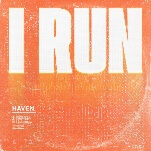Gould answers it by suggesting that the lack of metal would create a new frontier, giving 7th Sigma the feeling of a modern Western. The inhabitants of the bug-riddled territory have their own small town-systems, but they’re still being watched and protected by a surprisingly benevolent United States government.
The book’s protagonist, a boy named Kimble, starts working with the intelligence services of the territorial authorities, the Rangers. Kimble is good at everything—maybe a bit too good at times—but his humility prevents him from being too much of a Mary Sue. The local head of intelligence notes his competence and recruits him to help with problems already familiar from the modern southwest: gun-smuggling, meth-running, and cultists. But the science-fiction setting gives 7th Sigma a slight edge that keeps its adventure story moving at a brisk pace.
Kimble’s adventures bring him into contact with the outliers from humanity and from the “bugs,” which makes the virtual Western coming-of-age story more interesting. The premise is reminiscent of Philip K. Dick stories like “Second Variety,” where technology is going haywire in horrifying fashion, and even as people adapt to live with the new circumstances, so does the technology. This is slowly teased out through Kimble’s experiences on the fringes—the bugs are alien, yes, but they’ve become a known quantity. But when Kimble discovers a metallic dog built like the bugs, it’s a different story entirely.
Steven Gould is best known for Jumper and other young-adult fiction. While 7th Sigma isn’t explicitly aimed at a teen audience, it maintains a simple, direct form and language consistent with that form. It’s a throwback to mid-century science-fiction stories built on a simple, interesting premise and a straightforwardly heroic protagonist. In a time when speculative fiction seems driven by dark, epic, or long-running series, 7th Sigma’s simplicity is a refreshing change of pace.









































